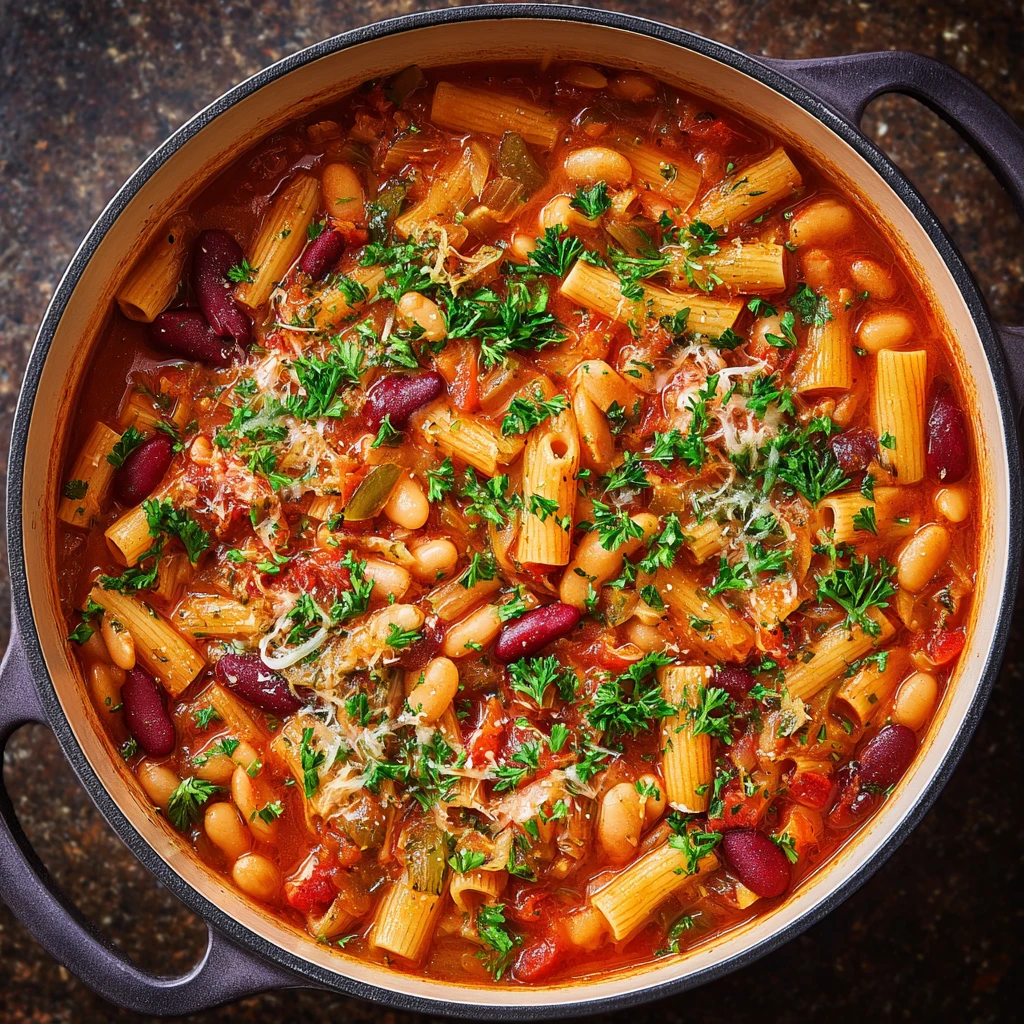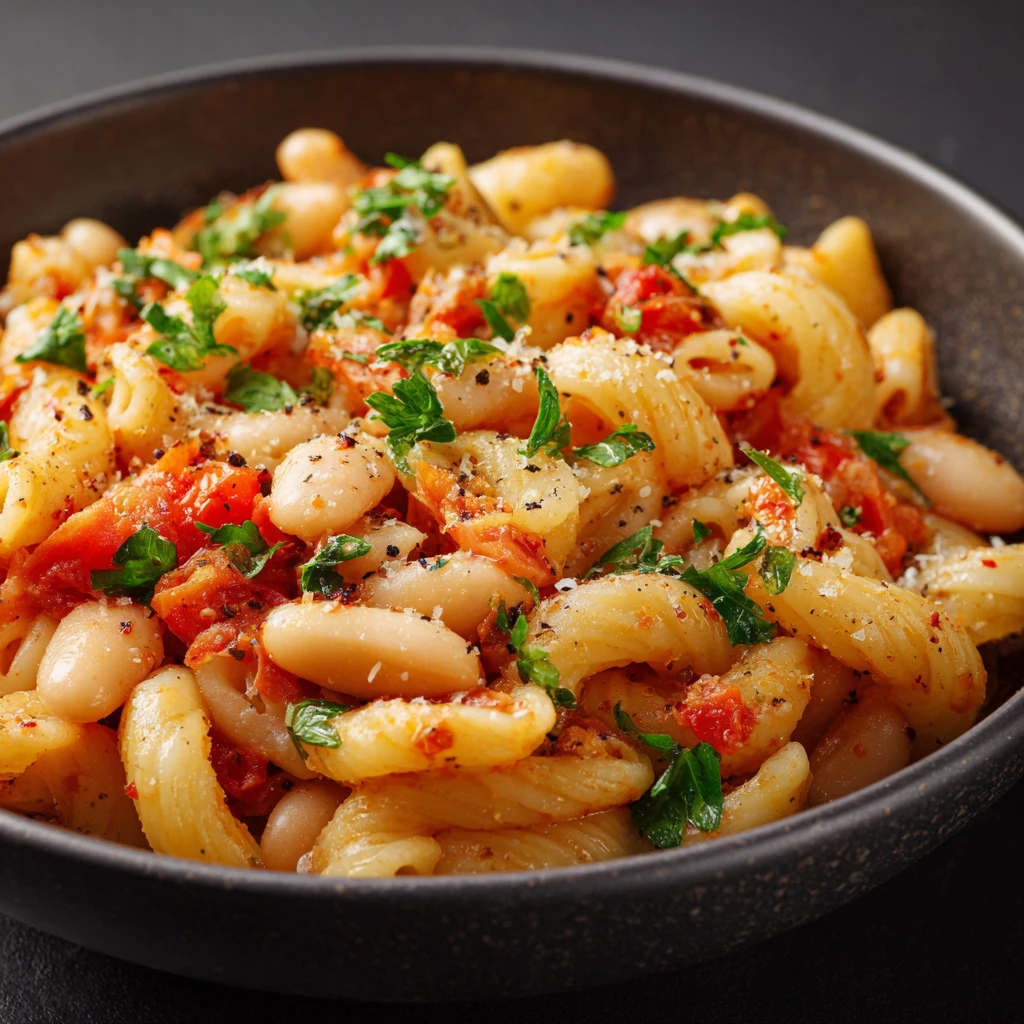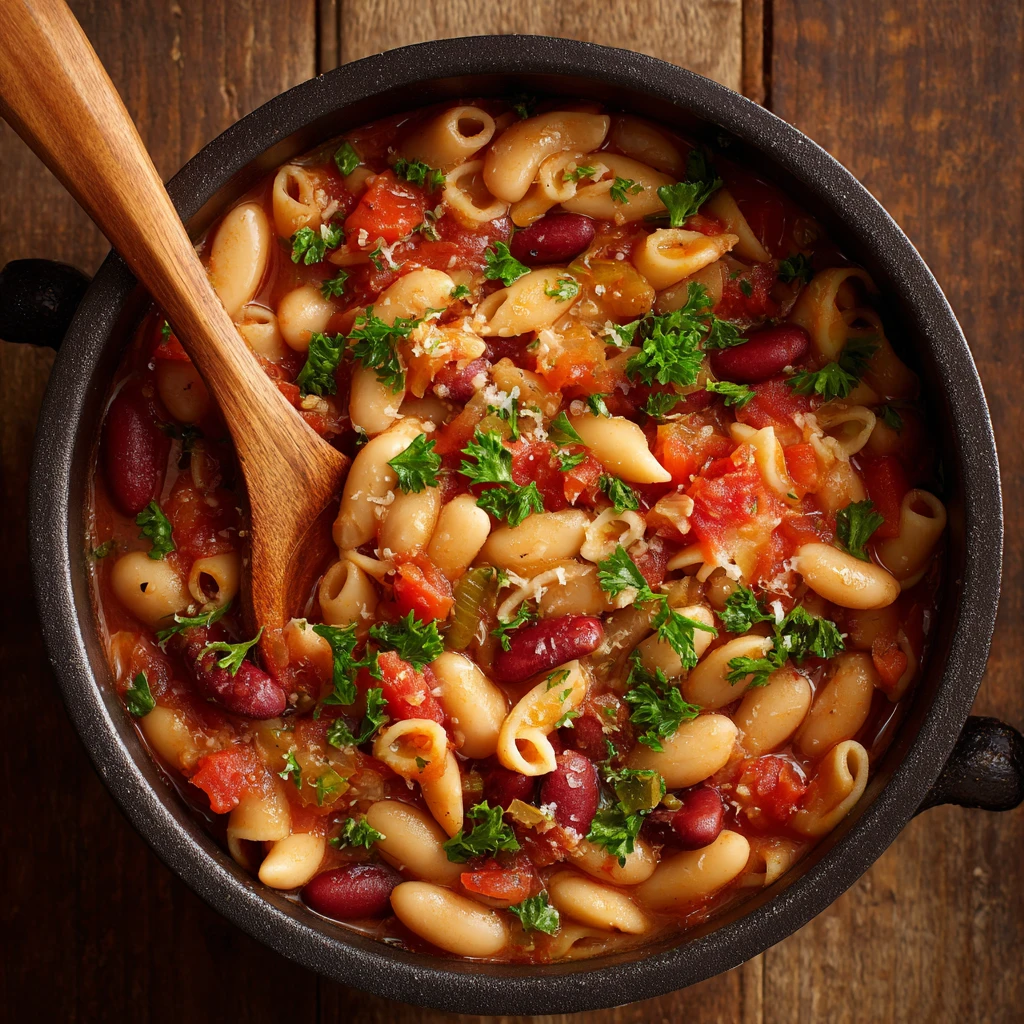Quick One-Pot Beans Pasta: A Flavorful Weeknight Dinner
Craving a comforting and satisfying meal but short on time? Look no further than one-pot beans pasta! This recipe delivers a hearty, flavorful dinner with minimal cleanup. By cooking pasta and beans together in a single pot, you’ll save precious time and effort without compromising on taste. Get ready to enjoy a delicious, easy-to-make dish that’s perfect for busy weeknights.
Why One-Pot Pasta is a Weeknight Winner
One-pot pasta has revolutionized the way many people approach weeknight dinners. The simplicity is undeniable: throw all the ingredients into a single pot, cook until the pasta is al dente, and dinner is served. But the benefits extend beyond just convenience. Cooking the pasta in the same liquid as the other ingredients allows the starches released from the pasta to create a creamy, flavorful sauce. This means you get a richer, more cohesive dish with minimal effort. Plus, fewer dishes to wash makes cleanup a breeze!
This recipe elevates the one-pot concept by incorporating beans, adding protein, fiber, and a delightful texture to the pasta. Beans are an incredibly versatile and nutritious ingredient, and they pair perfectly with pasta in countless ways. Their addition transforms a simple pasta dish into a complete and satisfying meal, making it a healthy and budget-friendly option for any occasion.
Crafting the Perfect One-Pot Beans Pasta
Creating the perfect one-pot beans pasta involves a few key considerations. First, choosing the right pasta shape is crucial. Shorter pasta shapes like ditalini, elbow macaroni, or small shells work best as they cook evenly and absorb the flavorful broth well. Next, selecting high-quality beans is important. Canned beans offer convenience, but cooking dried beans from scratch will yield the most flavorful results. Finally, don’t be afraid to experiment with different herbs and spices to customize the flavor profile to your liking.
Selecting Your Pasta and Beans
When it comes to pasta, choose a shape that holds its shape well during cooking. Overcooked pasta can quickly turn mushy, ruining the texture of the dish. Short pasta shapes like ditalini, elbow macaroni, small shells, or even broken spaghetti strands are ideal.
For the beans, you have several options. Cannellini beans (white kidney beans) are a classic choice for their creamy texture and mild flavor. Pinto beans offer a slightly earthier taste, while black beans provide a striking visual contrast and a slightly sweeter flavor. You can use canned beans for convenience, but remember to rinse them thoroughly to remove excess sodium. If using dried beans, soak them overnight or use the quick-soak method before adding them to the pot. Pre-cooking dried beans slightly can also help ensure they cook evenly with the pasta.
Building Flavor from the Base
The foundation of a delicious one-pot pasta lies in the flavorful base. Start by sautéing aromatics like garlic and onions in olive oil until softened and fragrant. This creates a savory base that infuses the entire dish with flavor. You can also add other vegetables like diced carrots, celery, or bell peppers for extra nutrition and texture.
Next, deglaze the pot with a splash of white wine or vegetable broth. This helps to lift any browned bits from the bottom of the pot, adding depth of flavor to the sauce. Stir in tomato paste for richness and acidity, and cook for a minute or two to caramelize it slightly. Finally, add your chosen broth or water, along with your selected herbs and spices.
Mastering the One-Pot Cooking Technique
The key to successful one-pot pasta is ensuring the pasta and beans cook evenly without becoming mushy or undercooked. Add the pasta and beans to the pot at the same time, along with enough liquid to cover them. Bring the mixture to a boil, then reduce the heat to a simmer and cook, stirring occasionally, until the pasta is al dente and the beans are tender.
The cooking time will vary depending on the type of pasta and beans you use, so be sure to check them frequently. If the liquid evaporates too quickly, add more broth or water to prevent the pasta from sticking to the bottom of the pot. Once the pasta is cooked, remove the pot from the heat and stir in any finishing touches like fresh herbs, cheese, or a drizzle of olive oil.
Variations and Additions to Elevate Your Dish
One of the best things about one-pot beans pasta is its versatility. You can easily customize the recipe to suit your taste preferences and dietary needs. Experiment with different types of beans, pasta shapes, vegetables, herbs, and spices to create your own signature version.
Adding Protein and Vegetables
For a heartier meal, consider adding extra protein to your one-pot pasta. Sausage, chicken, or tofu can be browned in the pot before adding the other ingredients. You can also add cooked shrimp or canned tuna towards the end of the cooking time.
Vegetables are a great way to add nutrition and flavor to your dish. Leafy greens like spinach, kale, or chard can be stirred in during the last few minutes of cooking. Heartier vegetables like broccoli, cauliflower, or zucchini can be added earlier in the cooking process to ensure they are tender.
Flavor Boosters and Finishing Touches
A few simple additions can take your one-pot beans pasta from good to great. A squeeze of lemon juice or a splash of balsamic vinegar can brighten the flavors and add a touch of acidity. A sprinkle of red pepper flakes can add a subtle kick of heat.
For a richer, creamier sauce, stir in a dollop of ricotta cheese, mascarpone cheese, or even a bit of cream cheese at the end of cooking. A generous grating of Parmesan cheese or Pecorino Romano cheese is always a welcome addition. Finally, garnish with fresh herbs like parsley, basil, or oregano for a burst of freshness.
Serving and Storing Your One-Pot Creation
One-pot beans pasta is best served immediately, while the pasta is still al dente and the sauce is creamy. Garnish with fresh herbs and a drizzle of olive oil for an extra touch of elegance. Serve it as a main course or as a side dish to grilled meats or roasted vegetables.
Leftovers can be stored in an airtight container in the refrigerator for up to three days. Reheat gently on the stovetop or in the microwave, adding a splash of broth or water if needed to prevent the pasta from drying out. The pasta may absorb some of the liquid as it sits, so it’s best to enjoy it within a day or two for optimal texture.
Frequently Asked Questions
Can I use dried beans instead of canned beans?
Yes, you can! Dried beans will have a richer flavor. Soak them overnight, or do a quick soak by boiling them for a few minutes and then letting them sit for an hour. You may need to add more liquid to the pot as they cook.
What kind of broth should I use?
Vegetable broth is a great all-purpose option. Chicken broth adds richness, and beef broth provides a deeper, more savory flavor.
Can I make this recipe gluten-free?
Absolutely! Simply substitute gluten-free pasta for regular pasta.
Can I add meat to this recipe?
Yes, you can brown ground sausage, ground beef, or diced chicken at the beginning before adding the other ingredients.
How do I prevent the pasta from sticking?
Stir the pasta frequently, especially in the beginning. Make sure there is enough liquid in the pot. If it’s drying out, add more broth or water.
Can I freeze leftovers?
While technically possible, freezing pasta can change its texture. It’s best enjoyed fresh or within a couple of days.
What if my pasta is overcooked?
Unfortunately, there’s not much you can do to fix overcooked pasta. Make sure to keep a close eye on it and test for doneness frequently.
Can I use a different type of tomato product?
Yes, you can use crushed tomatoes or tomato sauce in place of diced tomatoes. Adjust the amount to your liking.
Is this recipe vegetarian?
Yes, this recipe is vegetarian. To make it vegan, omit any cheese or substitute with a vegan alternative.
Can I make this in a slow cooker or electric multi-cooker (e.g. Instant Pot)?
While this recipe is specifically designed for the stovetop, you could adapt it for an electric multi-cooker. However, it’s best to find recipes specifically tailored to that appliance for the best results. A slow cooker is not recommended for this recipe.




